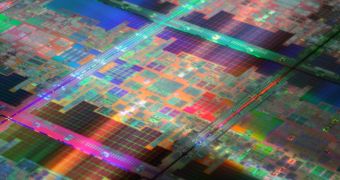On the consumer front, the proliferation of a certain CPU architecture among personal computers has been, for a long time, dependent on its support for Microsoft's Windows operating system. On the server market, however, the OS, instead of boasting a similar monopoly, has to contend with the quite widespread UNIX. This means that Intel's latest Itanium processors, based on the IA64 micro-architecture, won't be faced with extinction when Microsoft stops supporting them.
Itanium chips, being based on the aforementioned IA64 architecture, needed, until recently, special hardware platforms and still require specially developed software. Needless to say, these limitations do little to increase Microsoft's interest in the chips, especially with the arrival of Intel's other new platform, the Xeon EX.
Unlike its predecessors, this platform has a number of availability, serviceability and reliability capabilities and is not as needy as the IA64. Not only that, but the Xeon 7500 CPUs have eight cores, which is three/two times more than those of the Itanium “Tukwila” 9300 series. This is the main reason why Microsoft Corp. intends to make the upcoming Windows Server 2008 R2 the last server OS to support Itanium. This may look as though it will have a significant impact on Itanium's future marketing performance, but Intel reportedly claims that it will not.
“Windows represents less than 6% of current Itanium sales according to IDC's Q3 2009 server tracker report. Most Itanium users run Unix, specifically HP-UX. Those customers would argue that the combination of HP-UX and the Itanium platform represent a very formidable mission-critical solution, which many of the world's leading companies have chosen,” Patrick Ward, an Intel spokesperson who specializes in the Itanium lineup of products, said.
“For pure performance, you might go with Xeon processors, but the mission critical customers Itanium targets are most interested in reliability, serviceability and availability features across the operating system, processors and other aspects of their enterprise computing infrastructure. Processor performance is only one aspect of what interests them,” Mr. Ward shared.
“The Itanium line has a rich and growing set of RAS features that HP-and other operating systems fully utilize to deliver a mission critical solution. If a customer wants Unix on a mission-critical hardware platform, along with all of the other mission critical features that HP and others have developed for it, then Itanium is the way to go. X86 makes sense for users who want to run a Windows server environment, for example,” the spokesman for Intel explained.
Intel did not make any official statements about Itanium's future, but it is supposedly planning on launching a 32nm eight-core IA64 CPU (Poulson) in 2012, followed by the Kittson in 2014.

 14 DAY TRIAL //
14 DAY TRIAL //